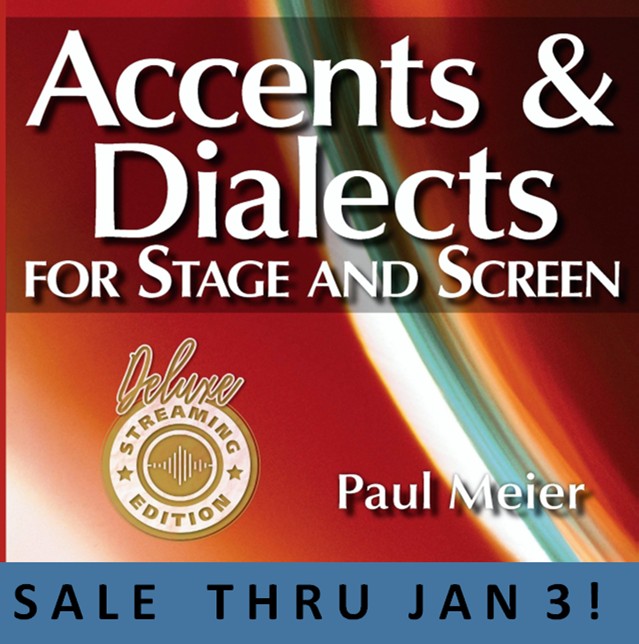Jiangsu 13
Listen to Jiangsu 13, a 19-year-old man from Changzhou, Jiangsu Province, China. Click or tap the triangle-shaped play button to hear the subject.
Both as a courtesy and to comply with copyright law, please remember to credit IDEA for direct or indirect use of samples. IDEA is a free resource; please consider supporting us.
BIOGRAPHICAL INFORMATION
AGE: 19
DATE OF BIRTH (DD/MM/YYYY): 01/05/1991
PLACE OF BIRTH: Changzhou, Jiangsu Province
GENDER: male
ETHNICITY: Han Chinese
OCCUPATION: student
EDUCATION: At the time of the recording, the subject was in his first year at university.
AREA(S) OF RESIDENCE OUTSIDE REPRESENTATIVE REGION FOR LONGER THAN SIX MONTHS:
Subject came to live in Suzhou, Jiangsu, seven months before the date of the recording.
OTHER INFLUENCES ON SPEECH:
The subject is an English major student. Apart from his teachers at school, all of whom were Chinese, there have been few influences. He has been a university student in Suzhou for seven months and has had some exposure to native English speakers (American and Irish), certainly not enough to have had any real influence. There is no obvious influence from Western movies and television shows, which all young Chinese now watch constantly.
The text used in our recordings of scripted speech can be found by clicking here.
RECORDED BY: Bill McCann
DATE OF RECORDING (DD/MM/YYYY): 23/04/2010
PHONETIC TRANSCRIPTION OF SCRIPTED SPEECH: N/A
TRANSCRIBED BY: N/A
DATE OF TRANSCRIPTION (DD/MM/YYYY): N/A
ORTHOGRAPHIC TRANSCRIPTION OF UNSCRIPTED SPEECH:
My hometown is (ah) Changzhou, and (ah) Changzhou is (ah, ah) north of Suzhou. (um) I began to learn English in the fifth grade. Now (ah) modern China is (ah) developed very rapidly (ahm) I think (ah) China will improved – will improve (ah) more and more quickly.
TRANSCRIBED BY: Bill McCann
DATE OF TRANSCRIPTION (DD/MM/YYYY): 23/04/2010
PHONETIC TRANSCRIPTION OF UNSCRIPTED SPEECH: N/A
TRANSCRIBED BY: N/A
DATE OF TRANSCRIPTION (DD/MM/YYYY): N/A
SCHOLARLY COMMENTARY:
Short readings from the analects of Confucius
The subject now goes on to read the following abstracts from the Analects of Confucius in his own Changzhouhua dialect. A reading in Putonghua (Mandarin) can be heard on the Jiangsu 7 sample.
KEY: A = Mandarin (Simplified); B = Mandarin (Pingyin); C = Dialect (Pingyin); D = English.
孔子: 论语 – Kǒng zǐ : lún yǔ – Kon zi:leng yu – Confucius: Lun Yu
學而第一 – xué ér dì yī – Xué ér dì yī – Chapter One
A: 1-1:- 子曰: 學而時習之、不亦說乎。
B: yī-yī :- zǐ yuē: xué ér shí xí zhī, bù yì yuè hū.
C: yī-yī :- zī yā: hó ér sé xié zhī, fē yī gāo xìng hāo.
D: 1-1:- The Master said: Is it not pleasure to learn, and practice what is learned time and again?
A: 1-2:- 有朋自遠方來、不亦樂乎。
B: yī-èr:- yǒu péng zì yuǎn fāng lái, bù yì lè hū.
C: yī-èr:- yóu báng zì yóu fāng lái, fé yì lè hāo.
D: 1-2:- Is it not happiness to have friends coming from distant places?
A: 1-3:- 人不知而不慍、不亦君子乎。
B: yī-sān: rén bù zhī ér bù yùn, bù yì jūn zi hū.
C: yī-sān: níng fē zhī ér fè yùn, fè yì jūn lùè hāo.
D: 1-3:- Is it not virtue for a man to feel no discomposure when others take no note of him?
為政第二 – wéi zhèng dì èr – wéi zhèng dì ér – Chapter two
A: 2-2:- 子曰:「詩三百,一言以蔽之,曰:『思無邪』。
B: èr-èr:- zǐ yuē: shī sān bǎi, yī yán yǐ bì zhī , yuē: sī wú xié.
C: èr-èr:- zī yā: sī sē bō sèi, yē yĭ yĭ bì zī, yā sī wú yā.
D: 2-2:- The Master said: In the Book of Odes there are three hundred poems, but they may be summarized in a single sentence: Think no evil.
A: 2-7:- 子游問孝。子曰:今之孝者,是謂能養。至於犬馬,皆能有養;不敬, 何 以別乎。
B: èr-qī:- zǐ yóu wèn xiào. zǐ yuē: jīn zhī xiào zhě, shì wèi néng yǎng. zhì wū quǎn mǎ, jiē néng yǒu yǎng; bù jìng, hé yǐ bié hū.
C: : èr-qī:- zī yóu mèn yào. zī yā: jīn zī yào zhā, sī wái nèng yāng. zī yú qiè mū, jié nèng yǒu yāng; fē jìng, hóu yì biē fū.
D: 2-7:- Zi You asked what filial piety was. The Master said: Nowadays, providing support for one’s parents is considered filial piety. But dogs and horses can also do this. If there is no respect, what is the difference?
A: 2-10:- 子曰:「視其所以,觀其所由,察其所安。人焉叟哉?人焉叟哉?
B: èr-shí :- zǐ yuē: shì qí suǒ yǐ , guān qí suǒ yóu, chá qí suǒ ān. rén yān sǒu zāi? rén yān sǒu zāi?
C: èr-shí :- zī yā: sī jí sōu yì guó jí sōu yóu, zū jí sōu ē. níng yī sōu zāi, níng yī sōu zāi.
D: 2-10:- The Master said: Watch what a man does. Find out his motives. See how he takes his ease. How then can the man hide his true self? How can the man hide his true self?
Commentary
The subject was raised in Changzhou, one of the major cities in Jiangsu, and about halfway between Nanjing and Suzhou. Changzhou has been a settled site for well over three thousand years.
There are major archaeological remains, the “Yancheng Remains,” of a walled city in the Wujin district of the city, which dates to the beginning of the Western Zhou Dynasty (1046 -771 BCE). The earliest record of a settlement is of a commandery (a district under the control of a commander) founded in 221 BC. Changzhou got its present name, which means “ordinary prefecture,” in 589 AD.
After the Grand Canal was constructed in 609 AD,Changzhou became, and remains, a canal port and trans-shipment point for locally grown grain. The rural counties surrounding Changzhou are noted for the production of rice, fish, tea, silk, bamboo and fruit.
During the Taiping Rebellion of the 1850s, one of five palaces housing the leaders of the so-called “Heavenly Kingdom of Great Peace” was constructed in Changzhou. The ruins of the “King’s Palace” are now a tourist site.
In the 1920s, cotton mills began to appear in Changzhou. The industry was boosted in the late 1930s when businesses began relocating outside of Shanghai following the Japanese occupation. Unlike many areas, Changzhou continued to prosper and today it is an important industrial center for textiles, food processing, engineering, and high technology.
Within China, Changzhou is famous for the China Dinosaur Park (located in the Xinbei District of the city). The Park contains dinosaur bones and fossils from all over China. The park has 50 various fossils and more than 30 amusement programs, and is a very popular tourist destination for the Chinese.
The city is also home to the Tianning Temple, one of the largest Zen Buddhist monasteries in China. The city has recently rebuilt the Tianning pagoda on the temple grounds. The pagoda (Tianning Baota) was first built during the Tang Dynasty (AD 618-907). It has been destroyed and rebuilt five times. The current reconstruction is 153.79 metres (504.56 ft) tall, making it the tallest pagoda in China, and perhaps the world.
Changzhou is famous for its combs, and the city has recently reconstructed its Bamboo Comb Lane area with classical Chinese architecture. Since ancient times, the Chinese have used combs to help maintain health, as it is believed that combing the hair each day is a must in traditional medicine. For nearly two thousand years, the finest combs in China have come from Changzhou. They became very popular with imperial concubines and empresses, and special arrangements were in place to ensure a constant supply of Changzhou combs for the Forbidden City.
Changzhou’s fine-toothed combs, known as shu bi, are still outstanding in terms of their design, materials and workmanship. The combs are made from a wide variety of materials, ranging from bamboo to many types of wood to exotic materials like animal bone and horn, but the traditional material for Changzhou combs is the wood of the small leaf boxwood tree. This wood is prized for its therapeutic properties in traditional Chinese medicine.
The subject’s dialect, Changzhouhua, belongs to the Northern Wu family of dialects found in South Jiangsu and whose premier example is Suzhou Hua. Phonetically, the Changzhou dialect makes use of a number of voiced or slack-voiced initials that are not found in Mandarin, as well as a larger number of vowel sounds. The tone system is of greater complexity, using seven tones based on the classical tonal system. Like a number of other Wu dialects, Changzhou dialect is considered to have seven tones. However, because the tone split dating from Middle Chinese still depends on the voicing of the initial consonant, these constitute just three phonemic tones, the rising-dipping third tone (e.g. ǎ) of Putonghua being entirely absent.
Changzhouhua also has a more complex tone sandhi than that found in modern Putonghua. In fact, sandhi in the Wu dialects are fairly complex compared to Mandarin. While not nearly as complex as the Suzhou dialect, Changzhouhua is no exception in this.
The city is notable as being one of the last places one hears Wu when traveling west before it gives way to the Southern Mandarin dialects in the provinces of Anhui and Henan. Within Changzhou itself, there are also small but noticeable distinctions in pronunciation between the city center and the rural surroundings. As most families have remained in the same village for many generations, and have been locally educated, these variations have persisted for a very long time. The greater freedom of movement enjoyed by the younger generation will undoubtedly lead to the gradual decline in these variations.
A major characteristic in the speech of this subject involves the /n/ and /ŋ/ minimal pairs. The transposition is very evident in “on,” for example. The occasional Chinese addition of a trailing /a/ after certain final consonants such as /d/ and /m/ is very evident throughout the recording. Good examples are “porridge,” “first,” and “fifth grade.” This is a carry-over from the Chinese, where certain words at the end of a sentence are emphasized in this way. It is not as pronounced as the similar effect often found in the speech of Italian speakers of English. Otherwise, although the subject does have a strong accent, apart from very slight evidence of the /l/ and /r/ minimal pair transposition, there are not many pronounced minimal-pair problems. The entire pronunciation scheme, of both consonants and vowels, leans back to the speaker’s own dialect but loses nothing in clarity as a result. Some might even find a certain degree of charm in this subject’s speech pattern, which has a slight musical character.
COMMENTARY BY: Bill McCann
DATE OF COMMENTARY (DD/MM/YYYY): 23/04/2010
The archive provides:
- Recordings of accent/dialect speakers from the region you select.
- Text of the speakers’ biographical details.
- Scholarly commentary and analysis in some cases.
- In most cases, an orthographic transcription of the speakers’ unscripted speech. In a small number of cases, you will also find a narrow phonetic transcription of the sample (see Phonetic Transcriptions for a complete list). The recordings average four minutes in length and feature both the reading of one of two standard passages, and some unscripted speech. The two passages are Comma Gets a Cure (currently our standard passage) and The Rainbow Passage (used in our earliest recordings).
For instructional materials or coaching in the accents and dialects represented here, please go to Other Dialect Services.
 IDEA: International Dialects of English Archive
IDEA: International Dialects of English Archive




